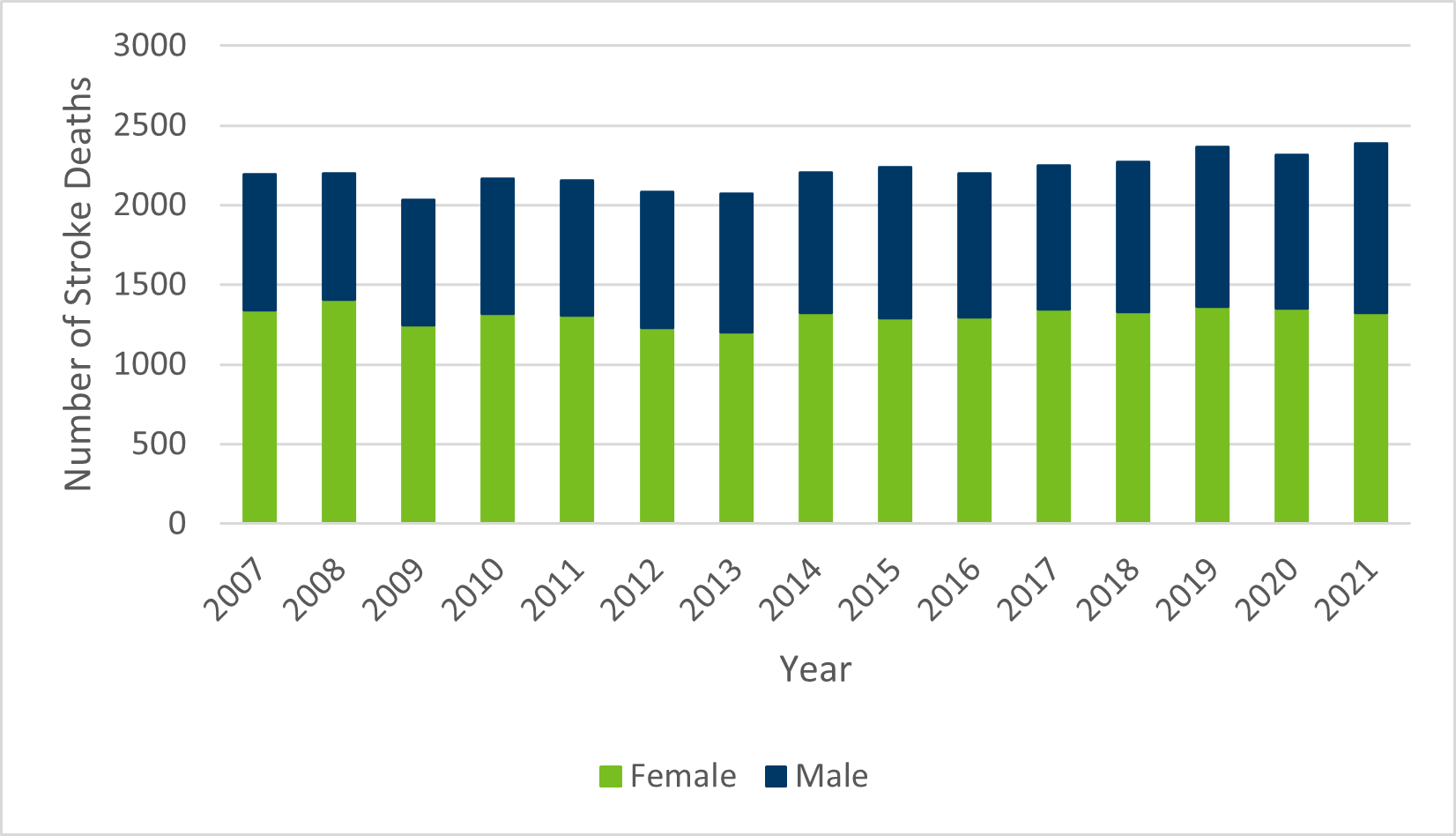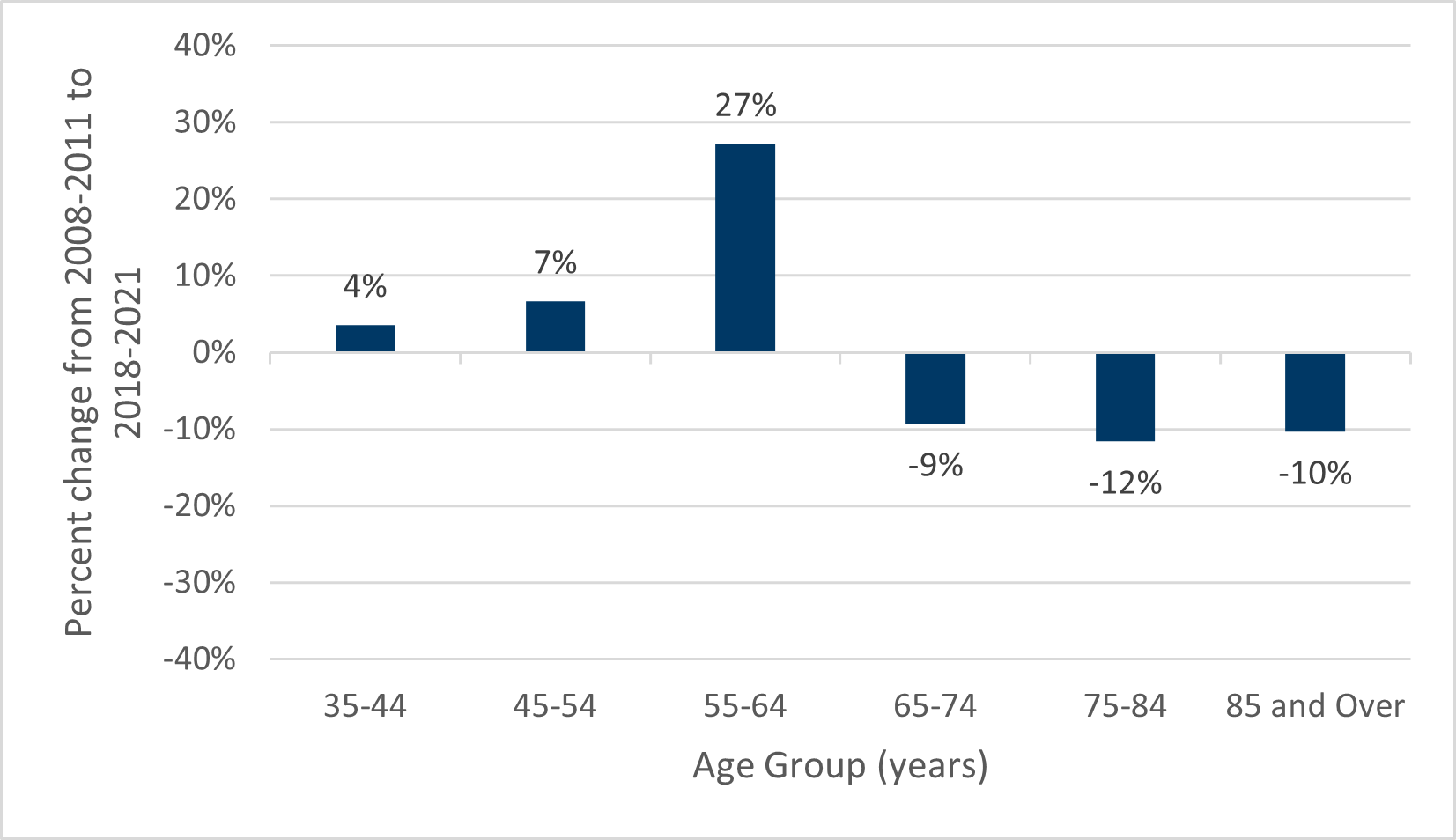Cardiovascular Health
- Cardiovascular Health Home
- CVH Data and Trends
- CVH Programs & Resources
- Minnesota 2035 Plan
- Minnesota Stroke Program
- About Us
Learn More
Related Topics
Contact Info
Cardiovascular Health Program
Cardiovascular Health Indicator
Measure: Stroke Death Rate
| Indicator | Date of Most Recent Measure | Current Measure | Trend |
|---|---|---|---|
| Age-adjusted mortality rate due to stroke | 2021 | 34.5 per 100,000 |
Stable |
Overview
- Stroke is the fifth-leading cause of death in Minnesota, responsible for 4.6% of all deaths in 2021. This is a lower proportion of overall deaths than is typical, as COVID-19 became the third-leading cause of death in 2020.
- Minnesota’s stroke death rate is about 16% lower than the United States average in 2021, and is the 14th lowest of the fifty states and District of Columbia.
- In Minnesota, there are large disparities in deaths due to stroke. Asians/Pacific Islander, African-American/African-Born, and American Indian Minnesotans die at rates approximately 30-40% higher than Minnesotans overall. Latinx/Hispanic Minnesotans have the lowest stroke death rates. These disparities in deaths are rooted in historical inequities that have persisted in the United States and Minnesota for many years.
- Stroke deaths have been dropping for decades, but this trend has stalled, and may have reversed since 2007.
See Also:
Last Updated: 02/13/2023


